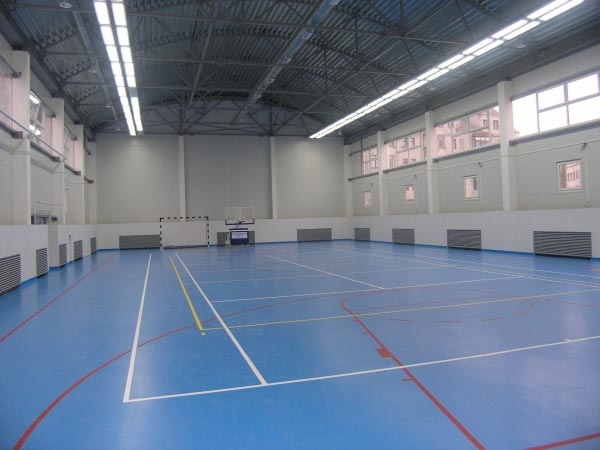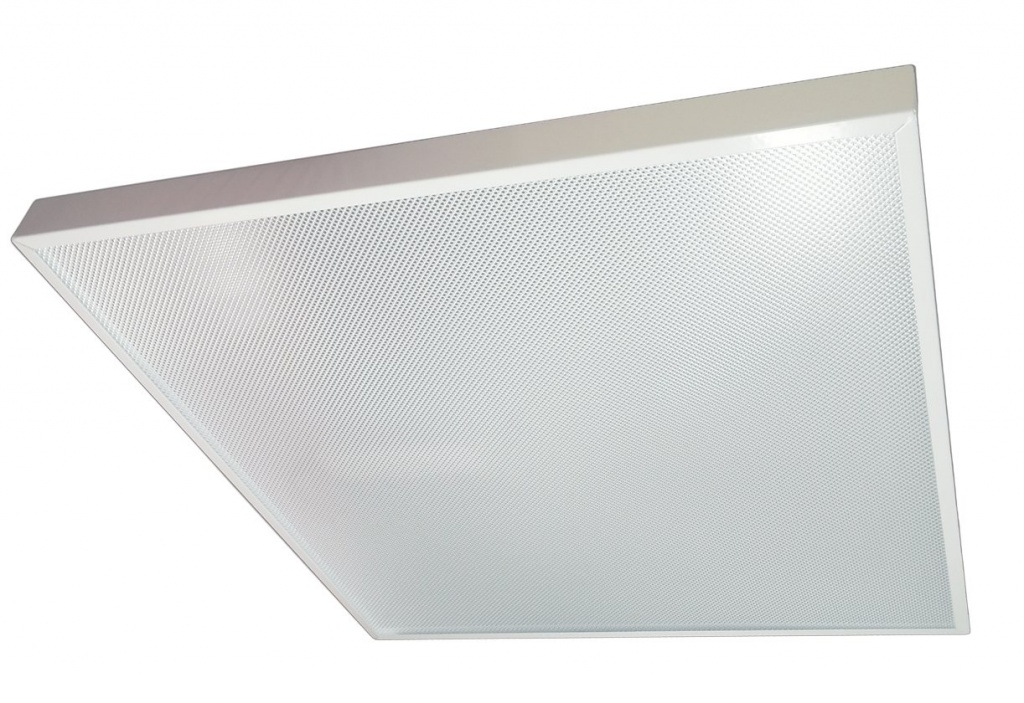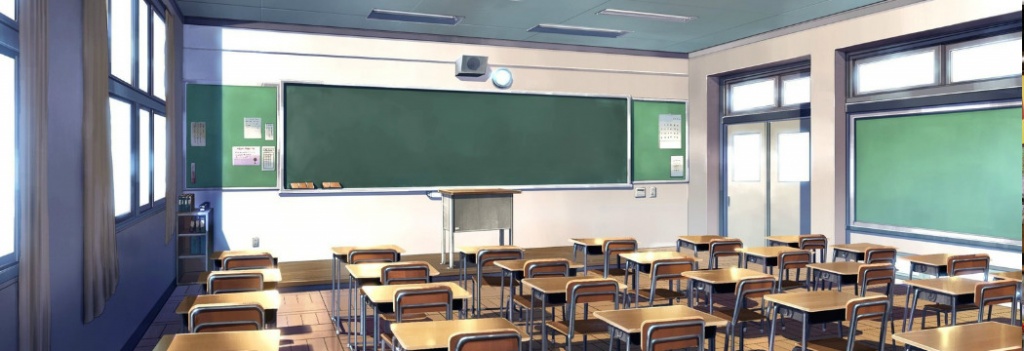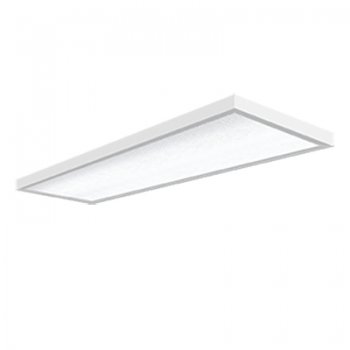Flowers are arranged in the classrooms. Hygienic requirements for lighting in classrooms
Mandatory requirements for artificial lighting of the premises of educational organizations are set out in clause 7.2. SanPiN 2.4.2.2821-10 "Sanitary and epidemiological requirements for the conditions and organization of education in educational institutions." According to this document, artificial lighting levels are provided in all premises of a general educational organization in accordance with hygienic requirements for natural, artificial, combined lighting of residential and public buildings.
In classrooms, a general lighting system should be used. It is provided ceiling lights with fluorescent lamps and LEDs. Luminaires with fluorescent lamps are located parallel to the light-bearing wall at a distance of 1.2 m from the outer wall and 1.5 m from the inner one. Provided fluorescent lighting using lamps according to the color emission spectrum: white, warm white, natural white.
A blackboard that does not have its own glow is equipped with local lighting - spotlights designed to illuminate blackboards. It is recommended to place the luminaires 0.3 m above the top edge of the board and 0.6 m towards the space in front of the board.
Luminaires used for artificial lighting of classrooms should provide a favorable distribution of brightness in the field of view, which is limited by the indicators of discomfort (Mt). The indicator of discomfort of the lighting installation of general lighting for any workplace in the class should not exceed 40 units. At the same time, fluorescent and incandescent lamps should not be used in the same room.
The minimum levels of illumination are set for classrooms, auditoriums, laboratories, recreations. When using computer technology and the need to combine the perception of information from the screen and keeping records in a notebook, the illumination on the tables of students should be at least 300 lux.
When designing an artificial lighting system for classrooms, it is necessary to provide for separate switching on of lighting lines. In addition, for the most rational use of artificial light and uniform illumination of classrooms, it is necessary to use finishing materials and paints that create a matte surface with normalized reflection coefficients:
The following paint colors should be used: for ceilings - white; for the walls of classrooms - light colors of yellow, beige; pink, green, blue; for furniture (cabinets, desks) - the color of natural wood or light green; for chalkboards - dark green, dark brown; for doors, window frames - white.
It is necessary to clean the lighting fixtures of luminaires as they get dirty, at least 2 times a year, and replace burned-out lamps in a timely manner. Faulty, burned out fluorescent lamps collected in a container in a specially designated room and sent for disposal in accordance with applicable regulations.
When carrying out supervisory activities, the management assesses the level of illumination in children's institutions to the requirements of sanitary legislation. In 2014, inspections were carried out in relation to 188 general educational institutions. In the course of inspections in children's and teenage institutions of the region, 11952 measurements of artificial lighting levels were carried out. Specific gravity of unsatisfactory measurement results was 7.8%, which is mainly due to unsatisfactory measurements of the pulsation coefficient - an indicator of the quality of artificial lighting in classrooms. Based on the results of unsatisfactory results, instructions were issued to eliminate deficiencies and measures were taken to improve lighting in educational institutions.
Insufficient levels of illumination are one of the reasons for the formation of the pathology of the organ of vision. In general, according to the results of preventive examinations of the child population in organized groups of the region in 2014, in comparison with 2013, there is a decrease in the detection of children with visual impairment by 3.4%.
In 2014, according to the results of control and supervision measures in educational institutions of the region, for violations of sanitary legislation, including for non-compliance with hygienic standards for artificial lighting, specialists of the Department drew up 963 protocols on administrative offenses, issued decisions on bringing the perpetrators to administrative responsibility in the form of fines.
In the life of every person, the school occupies great importance, since it is here that the best years of childhood flow, and the process of teaching children new knowledge takes place. Since the child's body is very receptive to new information, as well as to its environment, favorable learning conditions must be created in the school for the most effective educational process. Lighting is especially important here.
Creating a lighting system in any educational institution requires strict adherence to certain norms and requirements so that the level of illumination does not have an adverse effect on children, and they can safely study and acquire new knowledge. This article today will tell you how to make the lighting in the school right, and in all its various rooms.
Features of the organization of educational institutions
Schools in our country are designed to teach children of different age groups. So in the elementary school, very young children study, and in the middle and senior ones they are already older. Therefore, the requirements and norms for the class will differ depending on what age the children will study here.
school premises
Children at school spend most of the day doing a wide variety of activities:
- write and read;
- are engaged fine arts and works;
- go in for sports;
- rest during breaks;
- eat in the dining room;
- conduct laboratory classes in the classrooms of chemistry and physics.
In order for all the manipulations described above to take place efficiently and safely, it is necessary to create proper lighting not only a classroom and a separate workplace for each child, but also corridors and gyms.
It is worth noting that an improperly organized level of illumination in any school room will negatively affect the psyche, health and academic performance of each student. Therefore, in order for the level of illumination to be optimal, special norms and requirements were developed. These norms and requirements are spelled out in special documentation (SanPin and SNiP).

Lighting standards for schools
These documents, especially SanPin, describe all the norms and requirements that should be taken into account when organizing each workplace for a student, as well as the level of illumination for any educational premises.
Note! The lighting of school rooms and other premises is a significant component, if not the most important, in the proper organization of the educational process.
For this reason, a sufficient part is allocated to educational institutions in SanPin and SNiP. It contains all the norms and requirements that you should definitely take into account when organizing school lighting. It is worth noting here that the requirements and norms specified in the SanPin should be applied to all types of lighting (artificial and natural) and with an assessment of the characteristics of each individual room:
- a classroom and a separate workplace for a student;
- corridor;
- dining room;
- gym;
- laboratory rooms, etc.
Therefore, in each room, as they say, the requirements and norms specified in SanPin and SNiP regarding the level of illumination, their own types of lamps (can be LED, fluorescent, etc.) with certain characteristics should be used.
Natural and artificial type of school lighting
The regulatory documentation (SanPin and SNiP) sets out the norms and requirements for two types of lighting:
- natural;
- artificial.
At the same time, the maximum value when creating the level of illumination for the workplace of a student or the whole room is given to natural illumination.
Note! Natural lighting is optimal for the human eye. Therefore, for children, such a light will be the best solution.
Natural lighting in educational institutions is achieved through large window openings. Specific norms and requirements regarding the natural type of illumination are given in SanPin and SNiP. Moreover, great importance is given here to highlight the workplace of each student.

School natural lighting
Natural lighting by itself means the light emanating from the sun in clear or cloudy weather in the evening, morning or afternoon hours. But there are situations when natural lighting is not able to create the level of illumination required by the standards at the optimal level. In such a situation, the norms of regulatory documentation prescribe the use of an artificial type of backlight.
Note! Artificial illumination is implemented through different types lighting devices, the level of illumination of which can be adjusted. In contrast, natural light is changed only indirectly, with the help of curtains and blinds.

school lighting
To create artificial lighting, there are the following requirements for its organization:
- for the workplace of any student, an optimal level of illumination should be created. Such requirements are imposed for each school premises (classroom, gym, canteen, corridor, etc.);
- lack of blinding and flickering effect;
- uniform distribution luminous flux by area of the premises;
- the light should be diffused and without sharp shadows;
- be safe for children and do not change Chemical properties air, i.e. create environmentally friendly lighting fixtures and light sources (such as LED).
Consider the option of creating artificial lighting in each type of school space.
Lighting in classrooms and classrooms
The most important room in a school is the classrooms or classrooms. In them, children spend most of their educational time, gaining new knowledge in a wide variety of sciences. Here, for the student, his constant is determined workplace. At the same time, for the workplace of each individual student, the norms and requirements for SanPin and SNiP are the same, which allows you to create an optimal level of illumination over the entire area of the illuminated room. As a result, the performance of both an individual student and the entire class as a whole increases.

classroom lighting
Classrooms and classrooms must comply with the following requirements and standards:
- illuminated with warm light. Moreover, this requirement is more relevant for elementary school classes;
- the location of lighting fixtures should be selected based on the geometry of the room, the angle of light scattering and the level of brightness;
- uniform lighting of the room;
- for lighting, you can use LED or fluorescent lighting;
- the ratio of the least illumination in the classrooms should not exceed 0.5. The minimum degree of illumination is 150 lux. Wherein maximum level backlighting in classrooms should be at 750 lux.
At the same time, special attention should be paid here to the school board. This is due to the fact that the student's work in the classroom involves his going to the blackboard. For a comfortable stay of a student near the board, the following requirements must be met here:
- complete elimination of the blinding effect;
- creating a light flux that allows you to comfortably and conveniently view text and graphics from anywhere in the class;
- independence of lighting devices from other types of electrical appliances;
- efficiency of lamps;
- the minimum level of noise generated by lighting fixtures.

Lighting near the blackboard
Often in classrooms, oblong fluorescent lamps are used as lighting fixtures. But in recent times gaining more and more popularity in this area LED lights. But they are somewhat more expensive than fluorescent ones. Therefore, the latter are not being squeezed out of the lighting products market so quickly.
Lighting in school corridors
Students and teachers move along the school corridors between classes. Here, children spend their free time from lessons and relax. Therefore, the lighting system here is no less important than in classrooms.

Lighting in the school corridor
To ensure maximum safety of movement in these rooms, as well as a comfortable pastime for students, you can use properly organized lighting. Here, recessed or overhead raster lamps are usually used, in which fluorescent bulbs are built-in.
Note! Lighting school corridors can be equipped with special reflectors to scatter light.
These luminaires provide optimal luminous flux with low power consumption.
Assembly and sports hall lighting
An important place in the creation of high-quality lighting in the school is occupied by the lighting of the gym. Here the children are engaged exercise Therefore, it is important to create the safest possible conditions for children to stay in the gym during physical education.

school gym lighting
And lighting plays a major role in this. Most of the light load in this room falls on artificial lighting, since the windows in gyms are often located under the ceiling and are protected by bars to protect the glass from mechanical damage.
To illuminate the gym, fluorescent lamps are used, which are located along two long walls.
Note! Lighting fixtures in the gym are never placed on the end walls. Such placement of lamps can create a blinding effect, which can lead to injury during schoolchildren's active games.

Lighting in the auditorium
Sometimes, if fluorescent lamps create an insufficient level of illumination, then spotlights are used in such rooms. They are placed in the corners of the gyms. The same lighting principle applies to assembly halls. But here, high-quality natural light is possible through large window openings.
The lighting of these premises is the most difficult in terms of organization, since they have their own narrow specialization. Each hall has its own norms and requirements specified in SNiP and SanPin.
school cafeteria lighting
Another important school space is the dining room. In it, schoolchildren eat at a big break. Therefore, there is usually a pandemonium of children here. Because of this, the luminous flux here must also meet the requirements of SNiP and SanPin in order to minimize the risk of injury to children.

School cafeteria lighting
Here, the lamps should act as an aesthetic interior and, with their glow, create a comfortable environment for dining. The following types of fixtures can be used in the school cafeteria:
- invoices;
- suspended;
- embedded.
Note! In the school cafeteria, preference should be given to light sources that give a warm luminous flux.
Conclusion
The school has a wide variety of rooms with certain requirements and standards that apply to the level of illumination. All these difficulties are due to the fact that in classrooms, corridors, cafeterias and gyms it is necessary to create the most comfortable and convenient conditions for people to stay in them. In addition, it is necessary to create safe conditions for movement here. All norms and requirements for school institutions are stipulated in SanPin and SNiP. They will help you in the proper organization of the lighting of any school premises.
SANITARY AND EPIDEMIOLOGICAL REQUIREMENTS FOR THE ORGANIZATION OF THE EDUCATIONAL AND PRODUCTION PROCESS IN EDUCATIONAL INSTITUTIONS OF PRIMARY PROFESSIONAL EDUCATION
Sanitary and epidemiological rules and regulations
SanPiN 2.4.3.1186-03
(EXTRACT)
2.4.1. Daylight
2.4.1.1. Educational, training and production, recreational, residential and other premises with a permanent stay of students have natural lighting.
Without natural lighting it is allowed to design:
shell, wash, shower, restrooms at the gym;
showers and restrooms for staff;
storerooms and storage rooms (except for rooms for storing flammable liquids);
radio nodes;
film and photo laboratories;
book depositories;
boiler, pump water supply and sewerage;
ventilation and air conditioning chambers;
control units and other premises for the installation and management of engineering and technological equipment buildings;
facilities for storage of disinfectants.
Lamps for educational rooms

Luminaire power 36 W, 4500 K, 3200 Lm, recessed.

Luminaire power 38 W, 5000 K, 3450 lm, built-in/surface-mounted.

Luminaire power 36 W, 4000 K, 3800 Lm, built-in / overhead. Option - emergency block.

Luminaire power 33 W, 4800 K, 2900 lm, IP54, recessed
2.4.1.2. The main system of natural lighting in classrooms is lateral left-hand lighting. The direction of the main light flux should not be in front and behind the students. With a depth of classrooms of more than 6 meters, a right-sided illumination device is required.
In training and production workshops, assembly and sports halls, lighting systems are used (side - one, two - and three-sided) and combined (top and side). The choice of lighting system is determined by the nature of visual work, the dimensions of the room and equipment, the characteristics of the light climate, etc. For workshops with great depth, the best systems should be considered two-sided side and combined (in one- and two-story buildings).
Direction of light from the side windows to the work surface, as a rule, is left-handed. In metalwork and turning workshops, the direction of light from the side windows is to the right (this ensures the least shading from the body of the working body and the bulky left side of the lathes).

2.4.1.3. In classrooms, the coefficient of natural light (KEO) should be 1.5% at a distance of 1 m from the wall opposite the light openings, technical drawing rooms - 2.0%. In the gym with side lighting - 1.0%, with top and combined lighting - 3.0%.
2.4.1.4. In training and production workshops and workplaces of students at enterprises, KEO is provided in accordance with the characteristics of visual work in accordance with the requirements for natural and artificial lighting. In premises specially designed for work or industrial training of adolescents, the normalized value of KEO is increased by one category and must be at least 1.0%.
2.4.1.5. The unevenness of natural lighting in educational and industrial premises should not exceed 3: 1 (the ratio of the average KEO value to the smallest within the characteristic section of the room). The orientation of the windows of the classrooms should be on the southern, southeastern and eastern sides of the horizon. The windows of the drafting and drawing rooms, as well as the kitchen room, can be oriented to the northern sides of the horizon; the orientation of the computer room is to the north, northeast.
2.4.1.6. The ratio of brightness in the field of view should not exceed 3:1 - between the notebook and the surface of the table, 10:1 - between the notebook and the wall; 1:3 between blackboard and wall and 20:1 between skylight and wall.
2.4.1.7. For painting and finishing surfaces of the interior and equipment of classrooms and training workshops, diffuse-reflective materials of a light range of colors should be used: the ceiling and the upper part of the walls, doors and window frames dyed in White color, walls - in light yellow, light blue, light pink, beige, light green colors with a reflection coefficient of at least 0.6 - 0.7; tables - in light green and natural wood colors - with a reflection coefficient of at least 0.5; blackboards - in dark brown or dark green colors with a reflection coefficient of at least 0.2; floor - in light colors with a reflection coefficient of 0.4 - 0.5.
Luminaires for school corridors and utility rooms

Luminaire power 15 W, 5000 K, 1750 Lm, built-in/surface-mounted, IP30. Option - emergency block.

Luminaire power 18 W, 4000 K, 2100 Lm, built-in / overhead.

Luminaire power 32 W, 4000 K, 2800 lm, IP40, surface-mounted. Option - emergency block.
2.4.2.3. In the classrooms provide fluorescent lighting (allowed by incandescent lamps). Luminescent lamps LB should be used, lamps LHB, LEC can be used. Fluorescent lamps and incandescent lamps should not be used in the same room.
For general lighting of classrooms (classrooms, classrooms, laboratories), fluorescent lamps should be used: LSO02-2x40, LPO28-2x40, LPO02-2x40, LPO46-4x18-005, other lamps of the type given with similar lighting characteristics and design can be used .
2.4.2.4. In classrooms, fluorescent lamps with ballasts (ballasts) with a particularly low noise level are used.
2.4.2.5. Required amount luminaires and their placement in the room are determined by lighting calculations, taking into account the safety factor in accordance with the requirements for natural and artificial lighting.
In classrooms, lamps with fluorescent lamps are placed parallel to the light-bearing wall at a distance of 1.2 m from the outer wall and 1.5 m from the inner one. The blackboard is equipped with spotlights and illuminated with two lamps of the LPO-30-40-122 (125) type, located 0.3 m above the upper edge of the board and at a distance of 0.6 m in front of the board towards the class.
They provide for separate switching on of lamps or their individual groups (taking into account the placement of educational and technological equipment).
2.4.2.6. Working artificial lighting in training and production workshops and enterprises design two systems: general (uniform and localized) and combined (local is added to the general).
2.4.2.7. When performing indoor work of I-IV categories, a combined lighting system should be used. The illumination of the working surface, created by general lighting fixtures in the combined system, must be at least 10% in accordance with the requirements for natural and artificial lighting.
For general lighting in a combined system, predominantly fluorescent lamps should be used, regardless of the type of light source of local lighting. For local lighting, fluorescent lamps or incandescent lamps should be used.
2.4.2.8. Illumination levels for certain types of work performed by adolescents are presented in Appendix 1.
2.4.2.9. The choice of a light source should be made taking into account the characteristics of visual work, the level of illumination, the requirements for color discrimination in accordance with the requirements for natural and artificial lighting.
2.4.2.10. For general and local lighting industrial premises with specific environmental conditions (dusty, humid, explosive, fire hazardous, etc.), lamps are used in accordance with their purpose and lighting characteristics.
2.4.2.11. Irregularity of lighting (the ratio of maximum illumination to minimum) should not exceed 1.3 for works of I - III categories with fluorescent lamps; with other light sources - 1.5; for works IV - VII categories - 1.5 - 2.0, respectively. For industrial premises in which work of I-IV categories is carried out, it is necessary to provide for the limitation of reflected brilliance.
2.4.2.12. Dust cleaning of general lighting fixtures should be done at least 2 times a year; replacement of burned-out lamps - as they fail. Students are not involved in this work. Faulty and burned out fluorescent lamps are collected and stored until delivery in places inaccessible to students.

Luminaire power 18 W, 4000 K, 2100 lm. Mounted on a vertical surface with brackets.
Do you have questions about coverage of educational institutions? Call us, we will be happy to answer all your questions.



